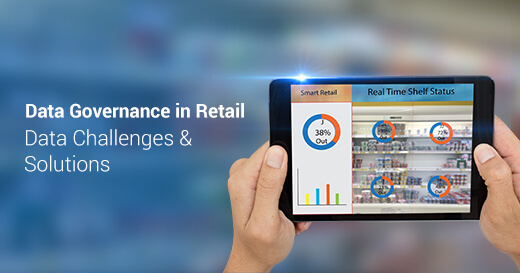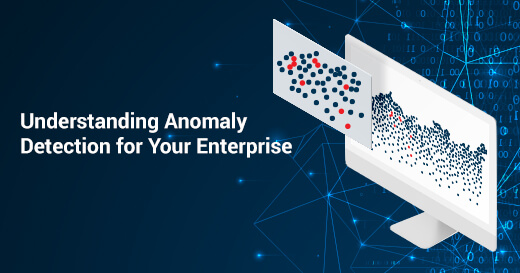Maintaining Data Quality During Cloud Migrations
Written by Imran Abdul Rauf
Technical Content WriterThe cloud migration sector was valued at $119.13 billion in 2020 and predicts the industry to reach $448.34 billion by 2026. Apparently, much of the contribution is from data quality.
Why do effective Cloud Migrations begin with top-quality Data?
Cloud migrations are hugely responsible for the success or failure of digital transformation for any business. Businesses need to move outdated data and systems into flexible, secure, and scalable cloud infrastructures to modernize their operations, innovate, and rationalize IT expenses.
Simply gathering shifting old, inaccurate data into new cloud systems can put your entire transformation objectives at risk. However, maintaining quality data as an essential aspect for effective cloud migration is much more than that.
Achieving Data Quality during Cloud Migration
Simply moving to the cloud isn’t helpful, especially if there are doubts regarding data reliability.
- What if the data gets lost during migration?
- What if the quality of data migrated is poor and inaccurate?
- How will the data quality impact the business?
According to Thomas Redman, the definition of data quality adds something more than accuracy—it should be fit for use, free from all kinds of glitches, and have the right features.
Challenges in assessing Data Quality for Cloud Migrations
Migrating your data goes through preparation, monitoring, and verification for pre-, during, and post-migration activities. Although several cloud service providers simplify the actual process of data migration, the preparation starts much earlier. Businesses should clearly understand the challenges associated with cloud data migration.
- Comprehending data: Although businesses can use cloud platforms to acquire and unify data access across multiple sources and infrastructures, companies still find it challenging to understand and leverage that data without any relevant context. Without business context and intelligence, the activity of migrating significant data assets to the cloud is a complete waste.
- Migrating from outdated data models: Specific legacy systems demand extensive planning to avoid losing data when migrating to newer data models.
- Resolving data ownership: Although cloud data migration seems like an entirely technical process, proceeding further becomes problematic when the concerned personnel doesn’t know who owns the data. Human resources present many challenges in data migration themselves. To affirm data quality before migration, the roles of each stakeholder in the business should be well-defined and associated with accountabilities.
- Managing duplicate records: Data duplication is one of the most common challenges in cloud data migration, which makes it hard for IT personnel to decide which data to keep and what’s its impact. Similar to data ownership, avoiding data duplication also requires a thorough understanding of the data and its work across the business’s IT infrastructure.
- Prioritizing quality concerns: Where there are various issues about data quality, the best way is to prioritize those with maximum influence on the business or IT operations. The key is to decide which ones are the most critical and require urgent attention. Conduct a quick, authentic impact analysis to prioritize data quality issues. Once done, the data ownership should be transparent and assigned to respective personnel.
The above challenges require a robust data governance program with a sound strategy for your data quality problems.
Migrating Data with predictive Data Quality
Cloud data migration is more than a one-time exercise; businesses can take this as an opportunity to create a data-driven culture. Data quality mostly thrives when enterprise-based security and privacy practices are implemented. In addition, teams can automate quality workflows for a centralized view and better control over data through an intensely collaborated framework and predictive data quality.
Users can also seamlessly audit data through an adaptive process to reduce business disruptions.
Add data catalog
Data catalog will register your data with associated business ownership contexts, definitions, usage, and policies. Then, conclude through data lineage to facilitate a rigorous impact analysis where you’ll acquire information on how and where data quality issues have originated. Moreover, employing a data catalog will also tell you how data sets are stored, aggregated, and used and explain privacy rules.
Quality-driven data governance foundation
Creating data quality over a strong data governance program enables users to exchange a unified understanding of data and promotes defined rules, responsibilities, and policies and procedures.
An enterprise platform induced with data quality, data catalog, and an integrated data governance groundwork provides transparency into data. It helps decision-makers decide which data assets should be moved to the cloud.
Migrate with the enterprise platform
The activity ensures that IT personnel can locate and migrate important data, identify issues beforehand, and implement a plan to improve data quality and encourage engagement from all. The proactive, automated insights into centralized data quality and lineage push compliance reporting, risk management activities, and auditing processes.
Final thoughts
Businesses like Royal Cyber, united by data-driven practices, understand that data access is crucial not only for customers, but also for systems and tools performance. If you want to leverage cloud infrastructure, the solution is in a robust data governance program and accessing the trusted data you wish to migrate.



